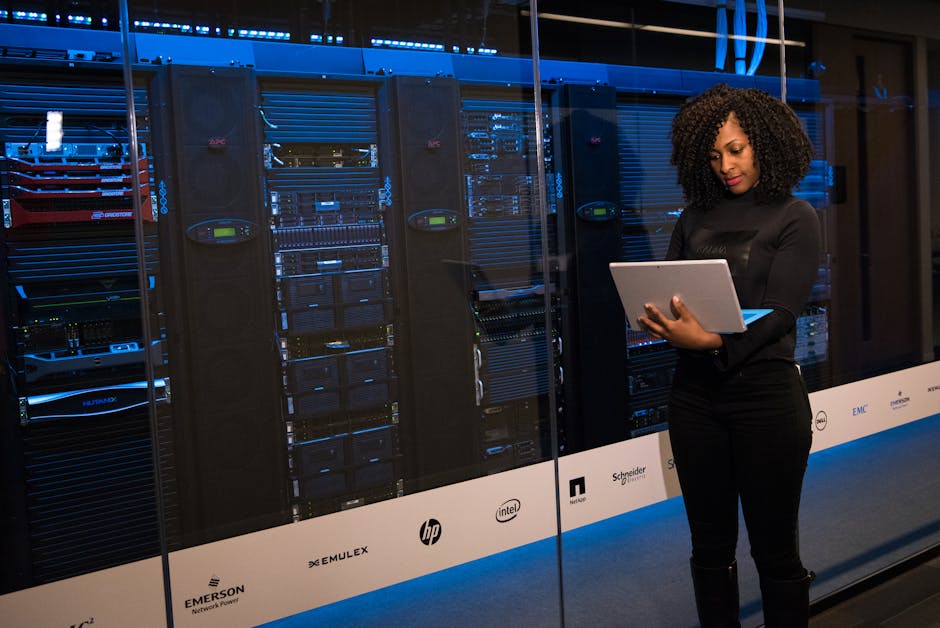Keine Datenlecks mehr: TrapC soll die Speicherprobleme von C und C++ beheben - Related to datenlecks, c++, beobachtet, attacken, trapc
Keine Datenlecks mehr: TrapC soll die Speicherprobleme von C und C++ beheben

TrapC ist eine neue, auf Cybersicherheit spezialisierte Variante der Programmiersprache C. Sie zielt darauf ab, die in C und C++ gängigen Speicherprobleme und Pufferüberläufe zu verhindern.
Verfügbar als quelloffene Software Ende 2025.
Der von Robin Rowe entwickelte TrapC-Compiler soll Ende des Jahres 2025 als Open-Source-Software verfügbar sein und ermöglicht es, C und TrapC-Code parallel zu verwenden. Zudem soll TrapC auch zu einfachem C++-Code kompatibel sein, zum Beispiel:
// [website] #include int main() { std::cout << "hello world" << std::endl; return 0; }.
Rowe hat sein Projekt auf dem letzten ISO-C-Meeting Ende Februar in Graz vorgestellt. Der TrapC-Compiler setzt auf speichersichere Zeiger, was Speicherlecks und Speicherüberläufe verhindern soll. Parallel dazu greifen Sicherheitsfunktionen, die in C fehlen, wie Konstruktoren und Destruktoren aus C++. TrapC entfernt zudem unsichere Schlüsselwörter wie goto und union und fügt neue Schlüsselwörter wie trap und alias hinzu. In einem Whitepaper nennt Robin Rowe ein Beispiel dafür, wie TrapC einem Pufferüberlauf entgegenwirkt: ein User-Dialog, in dem Anwender ihre Namen eingeben. In C geschrieben, sieht die entsprechende Code-Passage so aus:
// [website] (CWE–242, CWE–120, CWE-77) #include inline void gets_input() { char buffer[24]; printf("Please enter your name and press.
"); gets(buffer);// TrapC will terminate on overrun! printf("%s",buffer); }.
Geben Anwenderinnen und Anwender mehr als 24 Zeichen ein, provoziert das einen Pufferüberlauf und öffnet einen Exploit für Angreifende. In C oder C++ wird dieser Fehler nicht unbedingt registriert, was zu einem Crash führt.
Dagegen kommt es mit TrapC nicht zu einem Absturz. Im Fall eines Speicherüberlaufs oder anderen Fehlern wie etwa einer Teilung durch Null beendet der TrapC-Compiler das Programm und wirft eine entsprechende Fehlermeldung aus, es sei denn, es existiert eine passende Fehlerroutine.
So überschneidet sich TrapC mit C und C++ (Bild: Robin Rowe).
Mit dem Stichwort trap führt TrapC ein eigenes Error-Handling ein. Ein Beispiel:
// [website] #include "[website]" int main() { gets_input(); trap { puts("ERROR: invalid input"); return 1; } return 0; }.
Dabei muss die aufrufende Funktion die Fehler behandeln, denn sie lassen sich nicht wie bei C++-Exceptions weiterreichen. [website] bietet jedoch eine ähnliche Funktion wie throw . Weitere Details der Sprache finden sich im Whitepaper.
Mit Erscheinen von iOS 18 hatte Apple im September zahlreiche, auch schwere Sicherheitslücken gestopft. Das dazugehörige Supportdokument mit weiteren ......
Mozilla hat für alle aktuell unterstützten Firefox- und Thunderbird-Versionen Sicherheitsupdates herausgegeben, Google für den Webbrowser Chrome. Chro......
Threat hunters are calling attention to a new highly-targeted phishing campaign that singled out.
Vielfältige Attacken auf Nvidias KI-Architektur Hopper vorstellbar

Admins von KI-Infrastruktur mit Hardware von Nvidia sollten die HGX-Software aus Sicherheitsgründen auf den aktuellen Stand bringen. Geschieht das nicht, können Angreifer für verschiedene Attacken an zwei Schwachstellen ansetzen.
In einer Warnmeldung gibt Nvidia an, dass konkret Hopper HGX for 8-GPU bedroht ist. Eine Lücke (CVE-2025-0114 "hoch") betrifft den HGX Management Controller (HMC). Um daran ansetzen zu können, muss ein Angreifer aber bereits administrativen Zugriff auf den Baseboard Management Controller (BMC) haben. Ist das gegeben, kann im schlimmsten Fall Schadcode auf Systeme gelangen.
Die zweite Schwachstelle (CVE-2025-0141 "mittel") betrifft GPU vBIOS. An dieser Stelle können Angreifer DoS-Zustände erzeugen. Die Entwickler geben an, die Sicherheitsprobleme in der HGX-Ausgabe [website] gelöst zu haben. Bislang gibt es keine Berichte zu laufenden Attacken.
Zuletzt kümmerte sich Nvidia um Lücken in den KI-Plattformen Jetson und IGX Orin.
TrapC ist eine neue, auf Cybersicherheit spezialisierte Variante der Programmiersprache C. Sie zielt darauf ab, die in C und C++ gängigen Speicherprob......
HP liefert mit ThinPro ein Linux-basiertes Betriebssystem für Thin-Clients. Jetzt hat das Unternehmen eine Aktualisierung veröffentlicht, die hunderte......
A new botnet malware named 'Eleven11bot' has infected over 86,000 IoT devices, primarily security cameras and network video recorders (NVRs), to condu......
Patchday: Attacken auf Android-Smartphones beobachtet

Derzeit haben Angreifer Android-Smartphones im Visier und attackieren Geräte. Sicherheitspatches stehen für ausgewählte Geräte bereit. Nach erfolgreichen Attacken sind unbefugte Zugriffe auf eigentlich abgeschottete Bereiche des mobilen Betriebssystems möglich.
Bereits im November vergangenen Jahres warnte Google, dass Angreifer eine Schwachstelle im Framework (CVE-2024-43093 "hoch") ausnutzen. Warum sie es nun erneut tun, geht aus der aktuellen Warnmeldung nicht hervor. Die Schwachstelle betrifft die Funktion shouldHideDocument in [website].
Setzen Angreifer daran erfolgreich an, können sie Zugriffsfilter umgehen, um so Systemverzeichnisse einzusehen. Das kann zur Ausweitung von Nutzerrechten führen. Damit Attacken klappen, müssen Opfer der Beschreibung der Lücke zufolge aber mitspielen. Wie so ein Angriff im Detail ablaufen könnte, ist bislang nicht bekannt.
Die zweite attackierte Schwachstelle (CVE-2024-50302 "mittel") betrifft die Kernel-Subkomponente HID. An diese Stelle sind unbefugte Zugriffe auf den Kernelspeicher möglich. In welchem Umfang die Angriffe laufen, ist unklar. Google spricht von gezielten Angriffen in begrenztem Umfang.
Mehrere Sicherheitslücken im System gelten als "kritisch" (etwa CVE-2025-0074). An diesen Stellen können Angreifer für Schadcode-Attacken ansetzen. Außerdem können Daten leaken oder Angreifer lassen Software via DoS-Attacke abstürzen.
Die Androidentwickler geben an, die Sicherheitsprobleme in den Patch Levels 2025-03-01 und 2015-03-05 gelöst zu haben. Neben Google stellen auch Hersteller wie LG und Samsung für bestimmte Geräte monatliche Updates bereit (siehe Kasten).
Die Zentralstelle Cybercrime Bayern erhebt Anklage gegen einen 21-Jährigen aus Berlin. Ermittler werfen ihm vor, in großem Umfang Opfer mit Phishing u......
Google hat eine neue Sicherheitsfunktion für Android-Geräte angekündigt, die Betrugsversuche per künstlicher Intelligenz (KI) erkennen können soll. Da......
Microsoft hat Windows 365 Disaster Recovery Plus vorgestellt. Zum jetzigen Zeitpunkt liegt das Disaster-Recovery-Tool als lizenzpflichtiges Add-on für......
Market Impact Analysis
Market Growth Trend
| 2018 | 2019 | 2020 | 2021 | 2022 | 2023 | 2024 |
|---|---|---|---|---|---|---|
| 8.7% | 10.5% | 11.0% | 12.2% | 12.9% | 13.3% | 13.4% |
Quarterly Growth Rate
| Q1 2024 | Q2 2024 | Q3 2024 | Q4 2024 |
|---|---|---|---|
| 12.5% | 12.9% | 13.2% | 13.4% |
Market Segments and Growth Drivers
| Segment | Market Share | Growth Rate |
|---|---|---|
| Network Security | 26% | 10.8% |
| Cloud Security | 23% | 17.6% |
| Identity Management | 19% | 15.3% |
| Endpoint Security | 17% | 13.9% |
| Other Security Solutions | 15% | 12.4% |
Technology Maturity Curve
Different technologies within the ecosystem are at varying stages of maturity:
Competitive Landscape Analysis
| Company | Market Share |
|---|---|
| Palo Alto Networks | 14.2% |
| Cisco Security | 12.8% |
| Crowdstrike | 9.3% |
| Fortinet | 7.6% |
| Microsoft Security | 7.1% |
Future Outlook and Predictions
The Attacken Keine Datenlecks landscape is evolving rapidly, driven by technological advancements, changing threat vectors, and shifting business requirements. Based on current trends and expert analyses, we can anticipate several significant developments across different time horizons:
Year-by-Year Technology Evolution
Based on current trajectory and expert analyses, we can project the following development timeline:
Technology Maturity Curve
Different technologies within the ecosystem are at varying stages of maturity, influencing adoption timelines and investment priorities:
Innovation Trigger
- Generative AI for specialized domains
- Blockchain for supply chain verification
Peak of Inflated Expectations
- Digital twins for business processes
- Quantum-resistant cryptography
Trough of Disillusionment
- Consumer AR/VR applications
- General-purpose blockchain
Slope of Enlightenment
- AI-driven analytics
- Edge computing
Plateau of Productivity
- Cloud infrastructure
- Mobile applications
Technology Evolution Timeline
- Technology adoption accelerating across industries
- digital transformation initiatives becoming mainstream
- Significant transformation of business processes through advanced technologies
- new digital business models emerging
- Fundamental shifts in how technology integrates with business and society
- emergence of new technology paradigms
Expert Perspectives
Leading experts in the cyber security sector provide diverse perspectives on how the landscape will evolve over the coming years:
"Technology transformation will continue to accelerate, creating both challenges and opportunities."
— Industry Expert
"Organizations must balance innovation with practical implementation to achieve meaningful results."
— Technology Analyst
"The most successful adopters will focus on business outcomes rather than technology for its own sake."
— Research Director
Areas of Expert Consensus
- Acceleration of Innovation: The pace of technological evolution will continue to increase
- Practical Integration: Focus will shift from proof-of-concept to operational deployment
- Human-Technology Partnership: Most effective implementations will optimize human-machine collaboration
- Regulatory Influence: Regulatory frameworks will increasingly shape technology development
Short-Term Outlook (1-2 Years)
In the immediate future, organizations will focus on implementing and optimizing currently available technologies to address pressing cyber security challenges:
- Technology adoption accelerating across industries
- digital transformation initiatives becoming mainstream
These developments will be characterized by incremental improvements to existing frameworks rather than revolutionary changes, with emphasis on practical deployment and measurable outcomes.
Mid-Term Outlook (3-5 Years)
As technologies mature and organizations adapt, more substantial transformations will emerge in how security is approached and implemented:
- Significant transformation of business processes through advanced technologies
- new digital business models emerging
This period will see significant changes in security architecture and operational models, with increasing automation and integration between previously siloed security functions. Organizations will shift from reactive to proactive security postures.
Long-Term Outlook (5+ Years)
Looking further ahead, more fundamental shifts will reshape how cybersecurity is conceptualized and implemented across digital ecosystems:
- Fundamental shifts in how technology integrates with business and society
- emergence of new technology paradigms
These long-term developments will likely require significant technical breakthroughs, new regulatory frameworks, and evolution in how organizations approach security as a fundamental business function rather than a technical discipline.
Key Risk Factors and Uncertainties
Several critical factors could significantly impact the trajectory of cyber security evolution:
Organizations should monitor these factors closely and develop contingency strategies to mitigate potential negative impacts on technology implementation timelines.
Alternative Future Scenarios
The evolution of technology can follow different paths depending on various factors including regulatory developments, investment trends, technological breakthroughs, and market adoption. We analyze three potential scenarios:
Optimistic Scenario
Rapid adoption of advanced technologies with significant business impact
Key Drivers: Supportive regulatory environment, significant research breakthroughs, strong market incentives, and rapid user adoption.
Probability: 25-30%
Base Case Scenario
Measured implementation with incremental improvements
Key Drivers: Balanced regulatory approach, steady technological progress, and selective implementation based on clear ROI.
Probability: 50-60%
Conservative Scenario
Technical and organizational barriers limiting effective adoption
Key Drivers: Restrictive regulations, technical limitations, implementation challenges, and risk-averse organizational cultures.
Probability: 15-20%
Scenario Comparison Matrix
| Factor | Optimistic | Base Case | Conservative |
|---|---|---|---|
| Implementation Timeline | Accelerated | Steady | Delayed |
| Market Adoption | Widespread | Selective | Limited |
| Technology Evolution | Rapid | Progressive | Incremental |
| Regulatory Environment | Supportive | Balanced | Restrictive |
| Business Impact | Transformative | Significant | Modest |
Transformational Impact
Technology becoming increasingly embedded in all aspects of business operations. This evolution will necessitate significant changes in organizational structures, talent development, and strategic planning processes.
The convergence of multiple technological trends—including artificial intelligence, quantum computing, and ubiquitous connectivity—will create both unprecedented security challenges and innovative defensive capabilities.
Implementation Challenges
Technical complexity and organizational readiness remain key challenges. Organizations will need to develop comprehensive change management strategies to successfully navigate these transitions.
Regulatory uncertainty, particularly around emerging technologies like AI in security applications, will require flexible security architectures that can adapt to evolving compliance requirements.
Key Innovations to Watch
Artificial intelligence, distributed systems, and automation technologies leading innovation. Organizations should monitor these developments closely to maintain competitive advantages and effective security postures.
Strategic investments in research partnerships, technology pilots, and talent development will position forward-thinking organizations to leverage these innovations early in their development cycle.
Technical Glossary
Key technical terms and definitions to help understand the technologies discussed in this article.
Understanding the following technical concepts is essential for grasping the full implications of the security threats and defensive measures discussed in this article. These definitions provide context for both technical and non-technical readers.
phishing beginner
 Anatomy of a typical phishing attack
Anatomy of a typical phishing attackplatform intermediate
DDoS intermediate
malware beginner
 Common malware types and their characteristics
Common malware types and their characteristics

